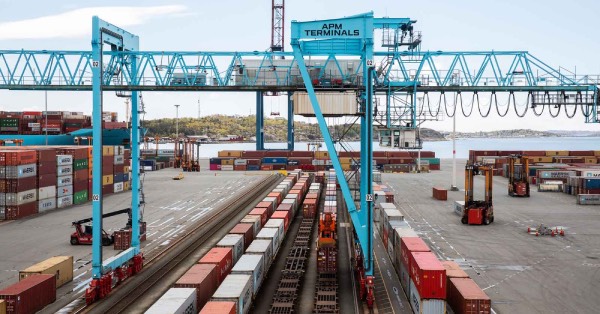APM Terminals Gothenburg continues to grow and take market share in a declining Swedish container market, according to the latest figures from the Ports of Sweden. The fact that Swedish companies are prioritising sustainable, time-efficient logistics solutions is increasingly clear.
49 per cent of the total Swedish container market was handled by APM Terminals Gothenburg in the second quarter of the year, the highest figure since 2015. Continuing the trend of recent years, the Swedish container market declined by almost 4,000 TEU during the first half of the year, while volumes through APM Terminals Gothenburg increased by 20,000 TEU.
Two important reasons for this major growth are the ocean-going direct traffic between APM Terminals Gothenburg and the world market, and sustainable rail connections to and from all parts of Sweden.
“The proportion of goods transported to and from the terminal by rail is growing rapidly and is now up to 55 per cent,” says Svante Altås, Sr., Sales Executive at APM Terminals Gothenburg. “The high demand for smart rail solutions is a result of companies having more stringent climate requirements combined with a prevailing shortage of truck drivers. In addition, our customers are seeing that rail is not only easy to use, but it’s also very reliable, which is highly attractive in a world of turbulent logistics.”
“We currently handle 75 fully loaded rail shuttles every week, from Piteå in the north to Karlshamn in the south. A combined rail and direct shipping logistics setup undoubtedly saves the most time and has the least environmental impact,” he concludes.
How APM Terminals Gothenburg is preparing for the future
- Major recruitment and training of staff
- Upgraded cranes and machinery (running on fossil-free fuel)
- Yard extension and optimisation
- Easing yard load with local storage at inland terminals
- Shipping channel deepening to accommodate larger vessels with higher loading capacity









































